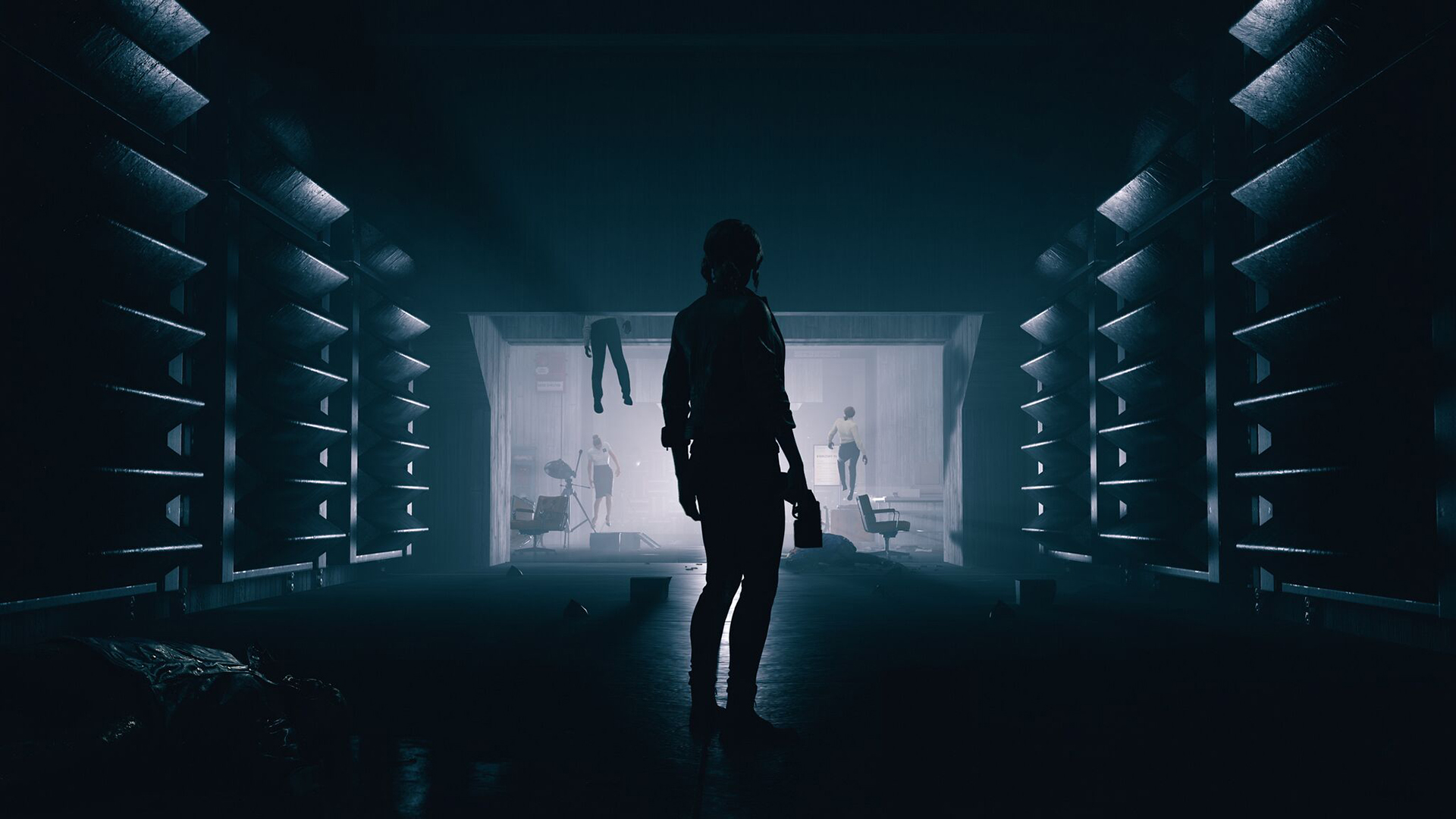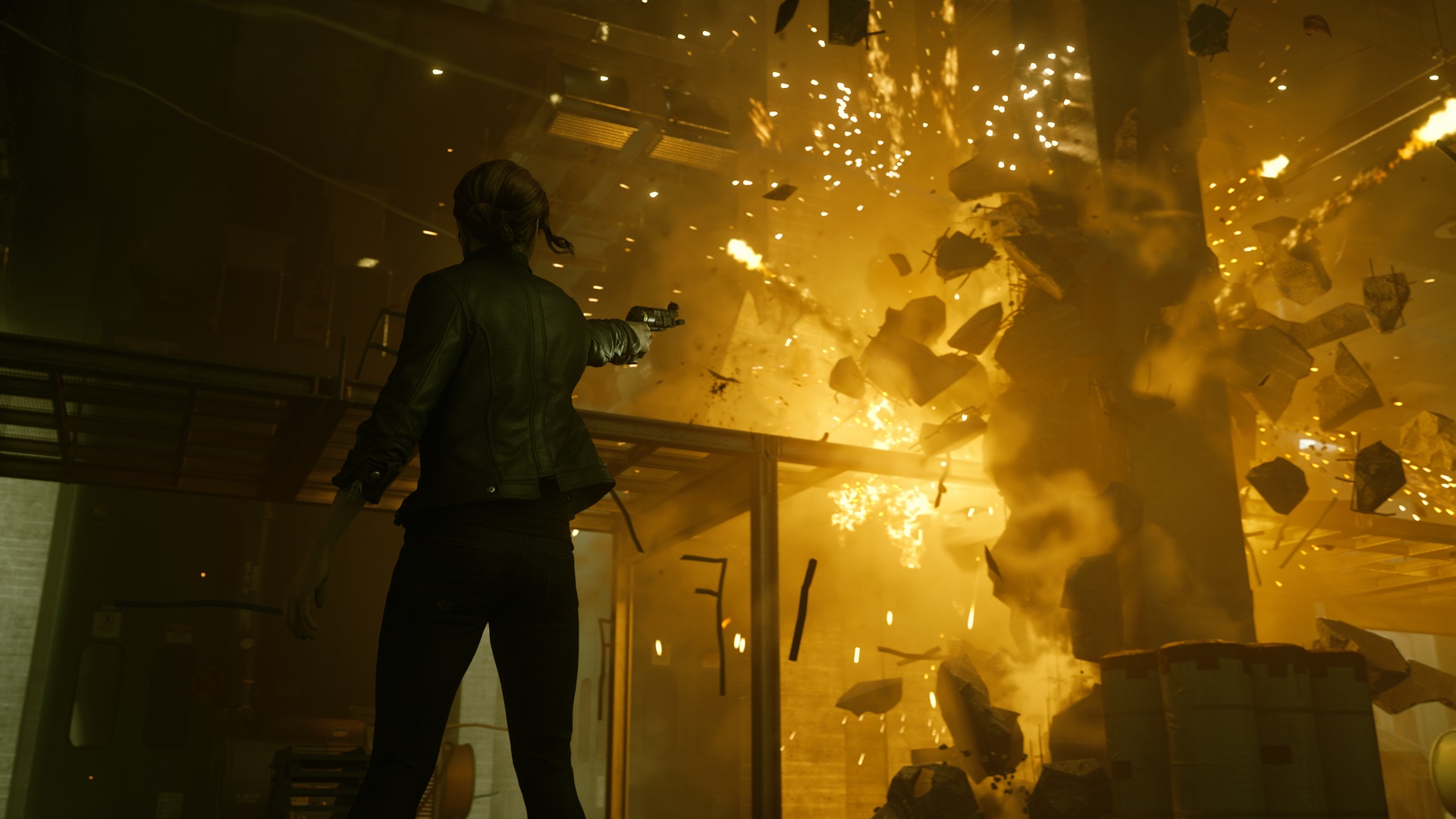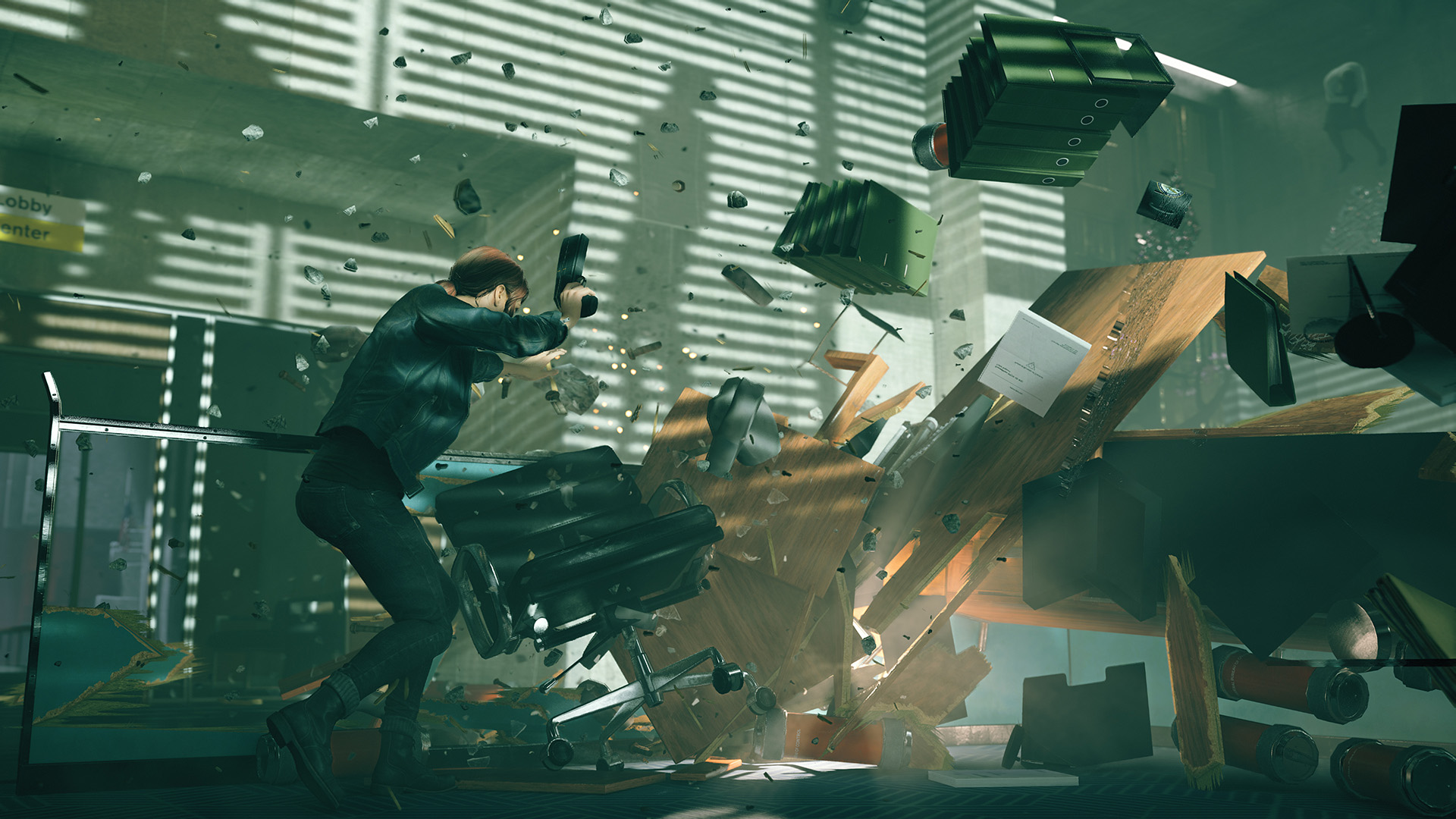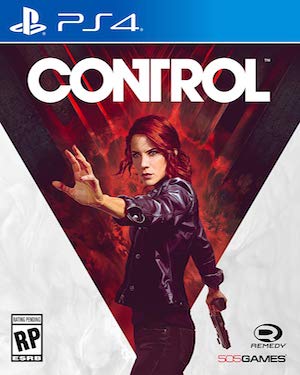
After having spent roughly an hour playing Control at E3 2019, I can firmly say that this feels like the game Remedy Entertainment have always wanted to create. In Remedy’s last outing, Quantum Break, we received a somewhat lackluster approach to a cinematics-gameplay crossed world that often ran clunky and needed more polishing time. But Control already looks prepared to give Quantum Break a run for its money in both quality and lore.
Control is a third-person action-shooter, but it delves deep in the psychological thriller and horror subgenres as well. These subgenres are glaringly present in the writing and character development, but more importantly they’re utilized in the game’s brutalist architecture that seeps from every pore in the game’s environments. Control has an intensity, a strength of uncommon commonalities that leaves you alone in a wide room and doesn’t tell you that there’s something always there watching over you from afar. Remedy’s surrealist approach uses a lot of blood red and pitch black lighting to keeps these moments of unease viable, causing your head to always wonder, “What if?” There are plenty of paranormal enemies ready to attack you at a moment’s notice, ready to rid you of life. But with Remedy’s intricately laid out level design in a world that is always changing, you’ll always maintain that feeling that a wall or pipe might come alive and attack.
The game takes place in and around the Federal Bureau of Control (FBC). This is the government’s transformative and paranormal headquarters that becomes the Oldest House. This is where protagonist Jesse Faden comes in. Jesse has recently been granted the title of Director of the Bureau, an instatement she received under unknown and mysterious circumstances thanks a sidearm she carries with her, called the Service Weapon.
Within the demo, Jesse is sent in to explore the Oldest House and find out what’s going on, what’s happening to the people of the FBC, and why they’re becoming possessed, while at the same time also being on her own mission to figure out her past from the people who know best: the FBC. And though Control is a decidedly linear experience for the most part, it often takes you through loops to be able to proceed to the next location. Unlike Quantum Break, which starts you at point A and tells you to go to point B after fighting a few enemies, Control leaves a lot of investigation at your fingertips before you can move on to the next section. This also means you’ll be able to investigate and play out side quests throughout the campaign – a first for Remedy.
Exploration and getting to know your environment is a key factor in getting far within the game, and just as important is observation. I found myself stuck in a few rooms throughout the experience, trying to figure out what is where and how to complete certain objectives. Many of the puzzles that can be found were placing power generator blocks into blank slots to reset the power to certain rooms. With Control’s brutalist approach to design, everything appears to be in place while at the same time scattered and in disarray.
It’s a very odd culmination purposefully built with style in mind that keeps these locations feeling alive, as though everything around you is moving on its own. And some things do move on their own. A lot of this can be explained by the ominous lighting effects I spoke of earlier, and how they stretch and skewer objects in the environment to make them appear more alive than what’s actually happening on-screen. And when thing actually do shift and move, you can bet something paranormal is going to happen, and it’s going to be scary.
While exploring the bloodied halls of this industrial factory within the Oldest House, the game’s enemies, called the Hiss, are always on standby, and send out authentic frights when they appear from out of nowhere. Heavily shaded in dark colors, and eagerly vicious, the Hiss are humans who have been infected by this paranormal presence – something fans of Alan Wake may find familiar. The Hiss are sneaky and like to hide behind corners or come out of doors you recently unlocked and vanish in a paranormal fog. They aren’t hard to defeat, but can easily outnumber you if you don’t take them out quickly.
And to take out these enemies, Jesse will have a sidearm with her at all times called the Service Weapon. Like many other elements within Control, the Service Weapon is also transformative, with different variations that can be unlocked with modifications. The Service Weapon is also a creature of the paranormal, meaning you don’t need to find ammo, because it never runs out.
Speaking of powers, Jesse will have a variety of powers at her disposal throughout the campaign. And like the Service Weapon, she gains experience, allowing you to upgrade her powers with modifications on a character skill tree. Within the demo I had a chance to use her psionic ability, which allows her to levitate objects and throw them around with abundant force. This power is super-helpful in tight situations, but I found myself using it even when things weren’t so tight. It’s really a lot of fun to experiment with! You can levitate just about anything that’s lying around and toss it at enemies or conveniently placed explosives to wipe out several enemies at a time. Within the demo there was also a hover-dash ability that was pretty much what it sounds like- Jesse hovers and dashes in midair and in different directions in order to reach higher or distant locations. This plays into puzzle solving later on in the game.
Overall, the experience I had in my short time with Control was great. Like I mentioned, the game feels more polished than Quantum Break did at launch, with more potential behind it. There were minimal clunky moments and areas with snags or hangups within its gameplay, too. I was really impressed wth the quality Remedy have put into Control, and I can’t wait to get my hands on the full version this August.


















